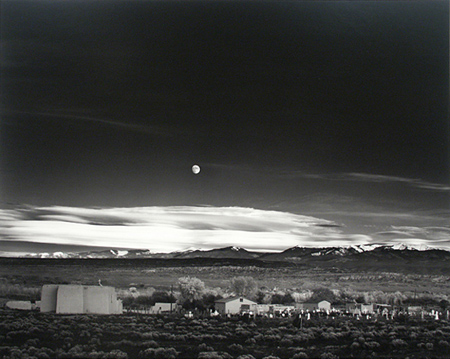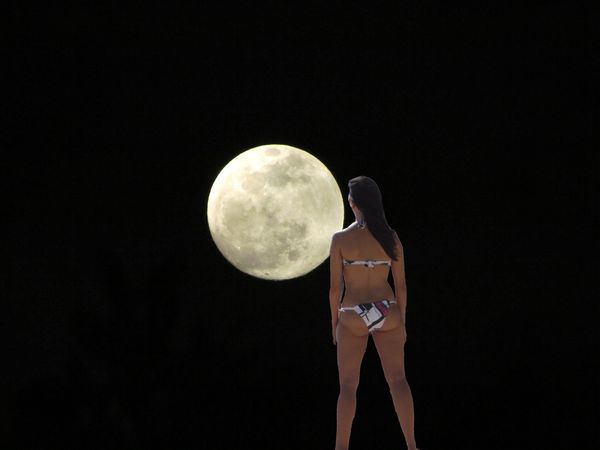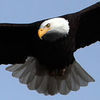Help needed for Moon shots over landscape at dawn or dusk
Oct 21, 2011 08:37:33 #
Greg
Loc: Maryland
quirkel wrote:
Thanks all! I have been able to photograph the full moon by itself pretty easily, but when shooting it to include in a landscape shot and still get that detail, that's where I've had trouble.
Now I've discovered that my camera (the Rebel XS) does not have a spot meter, so I may need to buy an external one?
Any suggestions with that?
Now I've discovered that my camera (the Rebel XS) does not have a spot meter, so I may need to buy an external one?
Any suggestions with that?
Your solution is a graduated ND filter. Your landscape and the moon are never going to be the same exposure. However if you put a ND grad on you can lengthen the time you need to expose the moon. Keep in mind, depending on how dark the landscape is, you may need an exposre time too long for the moon to appear stationary.
Oct 21, 2011 08:49:55 #
Another albeit more expensive approach is to purchase a square graduated neutral density filter. They are great for shots like this including sunrise and sunsets. Aren't we always looking for justification for more toys. Cokin makes nice products in this area
Oct 21, 2011 09:10:53 #
This is the story I saw in a video of Ansel Adams when he happened upon Hernandez NM one afternoon. He saw the moon rising on one horizon and the sunlight hitting the headstones of the cemetery from the other. In talking about it he said he had to do an almost instant decision as to what shutter speed he could use to freeze the moon rising in it's azimuth and at the same time not miss the setting sun's glow on the headstones. If I remember he said his minimum shutter speed was 1/50th to stop the movement of the moon. Your aperture is dependent on the lens you're using and how fast it is. Also how far you are from your nearest subject because your depth of field will be narrower. At infinity and using your depth of field preview button, if you have one, will enable you to check focus of the closest objects if any. If your lens isn't producing the results you need at the asa you've chosen the only other option is to raise it. The higher the asa the more noise. After the shot you most likely will have to manipulate it some to produce the best result; i.e. darkening the sky or as other posters have mentioned a graduated ND filter in the exposure. Good luck.
Moonrise, Hernandez - Ansel Adams

Oct 21, 2011 09:35:10 #
PhotoArtsLA wrote:
Well, this spells out the difference between your eyes and the limitations of photography. The foreground is a "night" exposure, the moon, a massively different as a "daylight" exposure.
HDR will not handle this very easily. It is much easier to cheat with two exposures, and just drop in the moon into the properly shot foreground.
HDR will not handle this very easily. It is much easier to cheat with two exposures, and just drop in the moon into the properly shot foreground.
I recommend putting two shots together as well... which also allows you to combine two scenes that wouldn't normally happen. This sample combined two shots taken a day apart in Florida. Neither photo made the keeper pile, but together they made a nice novelty shot.

Oct 21, 2011 09:43:56 #
randym77 wrote:
I think I'd use a little HDR with this, but if you... (show quote)
Do you have a link for one of those websites?
Oct 21, 2011 09:56:57 #
K wrote:
Do you have a link for one of those websites?
randym77 wrote:
Also, you might have better luck if the moon is rising at the same time the sun is setting. Lots of websites have sunset and moonrise times for specific locations; choose a night where the times are close (within 15-20 minutes).
Do you have a link for one of those websites?
This one's pretty good:
http://aa.usno.navy.mil/data/docs/RS_OneDay.php
You put in the date, your state and town.
Oct 21, 2011 10:02:56 #
Douglas Downey
Loc: Rye, NH
quirkel wrote:
I am really interested in how to photograph the moon over a landscape at dusk or dawn so that the details of the moon actually show up. Every effort i have made just shows the moon as a big blob in the sky. I really want that detail of the moon to show, while also capturing everything else clearly and in focus. I want to be sure to capture the sky correctly too.
Any help with advice and settings would be super appreciated!!
Thank you!!!
Any help with advice and settings would be super appreciated!!
Thank you!!!
Asked this question a few days ago wanting the same shot as you on film for many years now. Someone correct me if I'm wrong, but I think it can only be attained in the computer after the fact. The landscape needs long exposure, the moon needs short exposure and that's why the image only exists in paintings. Bearing in mind that I don't have a shred of software or digital experience yet, can't you shoot the moon properly from your tripod then wait for the moon to rise out of frame and shoot the landscape separately. Then build the shot with editing. Comments please.
Oct 21, 2011 10:21:53 #
Why does one turn off image stabilization when using a tripod?
Thanks
Thanks
Oct 21, 2011 10:27:30 #
Oct 21, 2011 10:32:01 #
nelsonauge
Loc: Louisville, Kentucky
Hello,
Shooting the moon requires some sacrifice in exposure.
The moon at night is basically reflecting sunlight, so the exposure is closer to daylight than to low, low light.
I have had decent results by doing one good exposure for the moon, and another for the landscape and then combining them in Photoshop. Short of this try shooting at dusk when the moon is visible and there is still some light on the landscape- usually just before or after the sun goes below the horizon. Shoot quick- it won't last long.
You can also expose only for the moon and let the landscape go into sillouette, this is also a nice technique.
Try to bracket using only the shutter, not the aperature- the aperature will change the landscape somewhat.
Best,
Nelson Auge'
Shooting the moon requires some sacrifice in exposure.
The moon at night is basically reflecting sunlight, so the exposure is closer to daylight than to low, low light.
I have had decent results by doing one good exposure for the moon, and another for the landscape and then combining them in Photoshop. Short of this try shooting at dusk when the moon is visible and there is still some light on the landscape- usually just before or after the sun goes below the horizon. Shoot quick- it won't last long.
You can also expose only for the moon and let the landscape go into sillouette, this is also a nice technique.
Try to bracket using only the shutter, not the aperature- the aperature will change the landscape somewhat.
Best,
Nelson Auge'
Oct 21, 2011 10:48:11 #
Imagine Stabilizing on a canon lens can be turned off with the switch on the lens. I am unsure of other cameras where the 'anti-shake' shake feature is in the camera but there must be a menu or this
Oct 21, 2011 10:57:24 #
Why would one turn off the SI? Is photo quality affected with SI off with all things equal as in tripod use with
SI switch ON or OFF. I have canon lens' and have wondered about this option.
Thanks
SI switch ON or OFF. I have canon lens' and have wondered about this option.
Thanks
Oct 21, 2011 11:14:16 #
IS can actually compromise tripod shots it is subtle, but at times just as important as locking the mirror up to prevent that minute movement especially for macro work
Oct 21, 2011 11:25:17 #
pdwoodswood wrote:
Why would one turn off the SI? Is photo quality affected with SI off with all things equal as in tripod use with
SI switch ON or OFF. I have canon lens' and have wondered about this option.
Thanks
SI switch ON or OFF. I have canon lens' and have wondered about this option.
Thanks
It's explained here:
Quote:
The IS mechanism operates by correcting shake. Wh... (show quote)
Some of Canon's lenses have two versions of IS: one for use handheld or on a monopod, one for use if you're using a tripod but panning.
Oct 21, 2011 11:32:01 #
pdwoodswood wrote:
What Is "HDR", also "subtle HDR"?
Thanks,
Thanks,
HDR = High Dynamic Range.
There are several ways to do it, but basically, it means taking several exposures in a range from underexposed to overexposed, and combining them so everything in the image is properly exposed. Sometimes this ends up looking really fake. It can be very striking and artistic, but not realistic looking.
With a light touch - subtle, rather than obvious - it can look realistic, just with a wider contrast range than you usually get from a camera.
Google it, and you'll find lots of examples.
If you want to reply, then register here. Registration is free and your account is created instantly, so you can post right away.




